The dream of each gardener is the cultivation of a special plant, plants with a unique color, which will be the highlight of the garden. Hydrangea Blue may well become such a plant. If you think that the hydrangea blue is one of the types of hydrangea, then it is a bit wrong. The concept of "Hydrangea Blue" combines hydrangea varieties with blue colors. Also, experienced gardeners are able to paint the inflorescences of large-scale hydrangeas in a bluish tint. In this article we learn what kind of hydrangea varieties have blue flowers, how to grow such plants as staining inflorescences in a blue color.
Hydrangea blue. Sorta
Hydrangea tree-like blue, for example, you will not meet. Varieties that are amenable to "staining" in blue, blue, pink tones relate to hydrangea hydrangea.
Hydrangea Blue "Mini Penny"
Excellent variety of large hydrangea with a long flowering period. Enjoying the colors on the shoots of the past and the current year from the beginning of summer and to the most frosts. Hydrangea can bloom not only blue, but also pink color. A bush has a pretty compact form and is able to reach 80 cm in height. One of the main advantages of this variety is the good stability of the plant to fungal diseases. If you plant "Mini Penny" Hydrangea in a sexhenist place, then you will be surprised by the magnificence of the contrast of green foliage and lush blue inflorescences.
Hydrangea Blue "Frido"
Fans of plants changing their color should be worth paying attention to this grade hydrangea. At the very beginning, the flowering period, the flowers have a pink shade, then the inflorescences begin to gradually become blue.
- The compliance of the hydrangea type "Fridom" is achieved in diameter 15 cm.
- The leaves of hydrangeas have a dark green color with an emerald tint, which creates a spectacular contrast to lush inflorescences. Large leaves with a toothed edge.
- Hortensia variety "Frido" prefers shady places for growth.
- With the onset of the winter period of time, the plant requires shelter.
Hydrangea Blue Ramars
Another spectacular variety of large hydrangea. Inflorescences can acquire a blue or blue tint depending on the acidity of the soil. Also, the plant may have pink flowers. The variety is very moisture, positively refers to spraying. The greatest effect of the bush reaches in a full-warning place. Experienced gardeners warn on landing of this type of large-scale hydrangea near the same moisture-loving plants that strongly absorb water.
Hydrangea Blue "Hopcorn-Blue"
One of the most "young" varieties, which has already managed to conquer the love of many fans of growing hydrangeas.
- A bush has a compact form. In the height and in the width is capable of reaching 100 cm.
- Hydrangea of \u200b\u200bthis variety is known for flowers that have external similarity with popcorn. They are collected in lush inflorescences of intense blue and purple shades.
- When choosing a landing site for this type of hydrangea, it is worth preferring a well-lit place that is protected from wind.
- The advantage of this variety is its high resistance to fungal diseases.
- The period of active flowering begins in the middle of summer and continues until September.
Hydrangea Blue "Jomari"
If you are an amateur of incredibly lush inflorescences, then the spectacular variety of the large-scale hydrangea "Jomari" will conquer you. Inflorescences have a blue or blue shade. A bush is able to reach 80 cm in height. Blossom will delight you for a long time - from the beginning of summer and to deep autumn. Inflorescences have the form of a hemisphere and appear both on the shoots of last year and on the shoots of the current year. A bush will need to be prepared for winter, create a shelter for him.
Hydrangea Blue "Comphetence"
The hybrid variety of "Comphetis" deserved the love of many gardeners with their unusual appearance. The variety appeared in 2007 in Japan. Its name in the Japanese language means "solid caramel of bright colors." Flowers of this type of hydrangea actually resemble miniature "caramel".
- Flowers at the hydrangea of \u200b\u200bthe "Comphetence" variety can be not only blue, but also pink.
- Flower petals have a smooth surface.
- On shoots there are 5-6 inflorescences reaching 5 cm in diameter.
- Leaves have ribbed edge and oval, elongated shape.
- This type of hydrangea loves moisture and abundant irrigation with water.
Hydrangea Blue Blueberry Cheesecake
A variety with a very "tasty" title is very attractive for growing. The intensity of blue inflorescences can be adjusted independently, making changes to the soil.
- Large hydrangea grade "Blisbury Cheesecake" grows in the form of a bush up to 100 cm in height and 120-130 cm in diameter.
- Flowers have a fairly flat form, but inflorescences look very lush and effectively.
- The compliance of hydrangea can reach 20 cm in diameter.
- The hortension bush of this variety grows up to 100-120 cm.
- One of the main requirements of the plant in its cultivation is the restriction in the solar rays during the day. The plant prefers to take pretty short on the duration of "solar baths". Choose a place for landing in a half, which will be covered in the morning and evening.
- The color of the inflorescence may have different intensity depending on which composition of the soil.
- For this variety of large hydrangea, the color of the leaves is also characteristic. By the end of the season, the leaves acquire a reddish hue.
Hydrangea Blue "Spike"
The flowers for this kind of large-scale hydrangea are collected in incredibly spectacular inflorescences, which are loved by their form huge balls. A bush is able to reach a height of 120 cm. Flowers combine blue and pink shades. A pleasant feature of this variety is that inflorescences appear both on the old bush shoots and new ones that appeared in the current year. Thus, you can enjoy the bloom of the hydrangea "Spike" continuously.
Hydrangea blue. Landing
Step number 1. Choose time for landing hydrangea blue
When is it best to plant Hydrangea Blue in your garden? Each gardener has its own preferences in this matter. Practicing hydrangea landing both in spring and autumn.
- Landing in the spring. Sit Hytenzia at the time when the snow had already gone, and the Earth begins to gradually warm up.
- Landing in autumn. Typically choose the month of September for landing hydrangea.
Step number 2. Choose a place to plant hydrangea blue
When choosing a place for landing a blue hydrangea worth paying attention to two main points:
- most varieties of blue hydrangeas prefer to grow in sexualized places. Of course, much depends on the requirements of a particular variety. Some hydrangeas for which too shaded places have chosen, are blooming late and quite poorly;
- the proximity of other plants. Almost all varieties of blue hydrangea occupy a significant space. Do not land this plant in close proximity to other decorative shrubs, trees. Give hydrangea minimum 2 meters of free space around it, and it will thank you with lush inflorescences.
Step number 3. We prepare the ground for the landing of hydrangea blue
If you want to grow truly beautiful and magnificent hydrangea, then you will definitely consider her preferences for the quality of the soil. Experienced gardeners thoroughly know the nature of the soil on their site. But the beginners are quite difficult to figure out what the soil on the plot. You can attribute a sample of soil to a special laboratory, where specialists will be experiencing all the important characteristics of the soil. Stripping from these knowledge, you will prepare the soil to plant a blue hydrangea.
- Almost all varieties of blue hydrangea prefer to grow on well-humidized and well-drained soils.
- The optimal composition of the soil will be the following: humus, leaf soil, peat crumb and river sand in ratios 2: 2: 1: 1.
- Hydrangea negatively refers to the soil with too much lime content.
- The optimal pH level is 5.0.
If you do not take into account the preferences of the blue hydrangea to the composition of the soil, then you can then see the corresponding external signs on the plant, which will indicate the overaffect or disadvantage of any element.
Step number 4. Landing a blue hydrangea to the ground
If you have decided on a place for landing a blue hydrangea, then you can start landing.
- Drop the planting yum with a depth of about 40 cm and about 60 cm wide. Sizes are approximate. They depend on the size of the root system of planting material. You can plant hydrangeas in a row. Then, instead of landing pit, it's easier to dig a trench. Some gardeners planted hydrangea intentionally closer to each other (60-70 cm) so that flowering was more lush.
- During the day before the estimated landing, the pit needs to be well moistened. About 3 water vests will come in handy. During the day, moisture is well absorbed, and the pit will be ready for landing.
- To fill the pit, you need to prepare a nutrient substrate with peat and humus. You can also add 50 grams of mineral fertilizer into each landing hole or any other fertilizer for hydrangea.
- In the center of the pit, a hole is made, hydrangea is put there. Carefully fall asleep the root system, sealing the soil with hands. The root neck must be at the level of the soil surface. For the full growth and development of the plant, the maximum cervix is \u200b\u200ballowed for 2 cm, but not more.
- The young plant needs to be pouring. Water should be so much so that it completely soaked the whole earthen com in the pit.
- The surface of the soil around the blue hydrangea suprix a small layer of mulch. So you keep moisture inside the soil for a longer time. The mulch can be used peat, wood bark.
Blue hydrangea. Care
Rules of watering blue hydrangea
Regular watering is very important for blue hydrangea. With insufficient watering, the plant instantly starts fading. If you quickly hide hydrangea, then it will immediately revive. It is advisable to water the blue beauty of 1 or 2 times a week. With arid weather, it is possible to increase the frequency of watering. Under one bush should be given at least 2 vestors of water. If you are thoroughly mulching the surface of the soil around the blue hydrangea, the amount of irrigation will be reduced to about 1 time in 10 days. Mulch naturally holds moisture valuable for plant.
Rules feeding blue hydrangea
Hydrangea Garden Blue, like any other decorative shrub, is positively responded to regular feeding. For season 1, you can make fertilizers under the bush about 3 times.
- At the end of May, daccias fertilize blue hydrangea superphosphate, urea and sulfur potassium in proportions 2: 1.5: 2.
- The second subcortex is accounted for at the time of active bootonization. Superphosphate and potassium sulfur (2: 1) can be added.
- The third top dressing of the blue hydrangea is advised at the end of summer. At this time, the period of active flowering continues. The plant will take a positive effect on making any organic fertilizer (manure).
On time and correctly made organic fertilizers are greatly affecting the beauty of inflorescences. But keep in mind if you are overdoing with such a kind of feeding, the shoots may not withstand such massive colors and break.
How to make a trimming of blue hydrangea
All varieties of large hydrangea, including varieties with blue inflorescences, require trimming. If you neglect this stage of care, then instead of a compact and beautiful bush, you will get incomprehensible thickets. The cutting of hydrangea is advised to carry out in several stages:
- in the middle of spring, a small part of old shoots are cut off. With the help of an acute secator, cut about the fourth part of the escape;
- also in the spring crushes and annual shoots, leaving at least 5 kidneys;
- at the autumn time they advise to cut all the inflorescences.
Of course, conducting trimming you need to remove damaged branches. Hydrangea Large Blue with gratitude will answer your efforts. This flowering bush can live in the garden for more than 50 years. Each correct pruning will make Hydrangea in the next season only more. If a 5-year-old bush has several dozen inflorescences, then a 10-year-old - already a few hundred!
Difficulties in growing blue hydrangea
What pests can hit the blue hydrangea
Beautiful blue hydrangea can be subjected to the harmful effects of some insects. If you do not start fighting with malicious pests on time, you can easily lose the bush. If your hydrangeas grow in close proximity, then be prepared to fight insects on all bushes. Among the most disastrous pests for hydrangea can be allocated:
- cute tick. The consequences of this microscopic spider on the plant will immediately notice. Symptoms: yellowing of the leaves, the appearance of an unusual pattern on the leaves, marble color, withering the leaves, the appearance of a web on the bottom of the sheet;
- gallean nematode. This microscopic worm affects the roots of young hydrangeas. Symptoms: the formation of "blisters" on the roots of the plant, reinforce the roots, fading the entire plants;
- sheet fault. Another dangerous pest, which can lead to the complete death of a blue hydrangea. The failure can also spread some viral diseases. Symptoms: lesion of the bottom of the sheet, yellowing and fond of leaves;
- snails. Hortensia is an incredibly tasty "dessert" for grape or amber snails. They can emblooked young shoots, kidneys, buds. Symptoms: the presence of slips around the plant. Snails especially love to "attack" hydrangea under winter shelter.
Symptoms of various diseases of blue hydrangea
- White rotting of blue hydrangeas - fungal disease. Symptoms: The shoots become brown, new shoots are also growing dark, and over time are covered with white raids, which later you can see small splashes of black color. Treatment: the use of fungicides.
- Gray rot Blue Hydrangees - fungal disease. Symptoms: looseness and softness of the above-ground parts of the plant, the appearance of "holes" on the leaves, deterioration of the state of the plant at high humidity, the appearance of gray raids. Treatment: "Celestical", "Fundazol". It is necessary to delete the affected parts of the plant in a timely manner;
- Pereronosporosis of blue hydrangea - fungal disease. Symptoms: Dark spots on the leaves and shoots, the number of which increases with high humidity. Treatment: Plant treatment with a solution of copper mile with soapy water, various fungicides. It is necessary to delete the affected parts of the plant in a timely manner.
- Puffy Rosa of Blue Hydrangees Real - Fungal Disease. Symptoms: appearance of spots on the leaves. The stains first have a green-yellow color, and then dark brown. The presence of gray rope on the leaves. Treatment: processing of all parts of the plant by fungicides, the removal of amazed leaves.
- Ring spottedness of blue hydrangeas is a dangerous viral disease. Symptoms: appearance on the leaves of dark "rings", drying and changing the shape of the leaves. Treatment: Unfortunately, the plant is deleted.
- Blue hydrangea septoria - fungal disease. Symptoms: appearance of spots on the leaves with a light middle and dark edging. In contrast to real mildew, the stains have an irregular form and can merge in the development of the disease. Treatment: Treatment of plant parts by drugs that contain copper.
Blue hydrangea reproduction
Method number 1. Blue hydrangea reproduction with cuttings
- When breeding hydrangea Blue green cuttings, it is very important to choose the right cutting cutlery. The best suited young bushes of hydrangea. They advise chop cuttings from the side parts of the bush, because They are better rooted.
- Green cutlets are a humble stem with 2-3 kidneys. It is necessary to engage in the workpiece of cuttings in the early morning when the bush is filled with moisture.
- After cutting, the green escape must be installed in the water in the shaded place. In order to prepare escape to the landing, you need to trim its top part and shorten on a third of the leaflets.
- Prepared cuttings need to be placed in a solution of any corpsulating drug.
- Hydrangea cuttings are needed in a nutrient earth mixture, covering with banks. Watering is needed directly by banks.
- If after 1 month new leaves appeared, then the cuttings were rooted and can be removed.
Method number 2. Gorishtasis of hydrangea blue division bush
The blue hydrangea is breeding the way to divide the bush when they want to transplant the plant to a new place of growth.
- Before digging the bush, it is necessary to pour well.
- Shoot the bush very carefully, without damaging the root system.
- With the help of water lightly clean the roots from the ground to facilitate the process of dividing the bush.
- Divide the bush on as many parts as its size allows.
- Each of the parts landed into the ground.
Method number 3. Blue hydrangea reproduction
Reproduction with tanks is a rather popular method and simple.
- In the spring around the bush make radial recesses. The depth must be about 2 cm.
- In each of these recesses, the lateral shoots of hydrangea are laid and fixed them with the help of homemade brackets, slingshots, etc.
- By the end of the summer season, new shoots should appear from over each of such chains. In October, the discharge fell and separate the new shoots of hydrangea. Before the winter, they are simply jammed into the ground, and the next spring is planted on the bed for rearing. Attach young hydrangea, obtained by this method of reproduction, it will be possible for a permanent place of growth in 1 year.
Method number 4. Reproduction of naked hydrangea seeds
Seed method of reproduction of hydrangea is not common. All because in this way it is impossible to breed hybrid varieties, which most. If you decide to propagate the natural hydrangea in this way, then be patient. After all, you will have to grow "seedlings" at home for about 2 years. Only after this period the seedlings will become such a size that will allow them to plant them in an open ground.
- There is no need to somehow cook the seeds of hydrangea to landing.
- Seeds are folded on the surface of the nutrient soil, slightly pressing. Capacity with seeds are covered with glass or film. Of course, the soil should be wet.
- Watch for sowing. Be sure to ventilate them, periodically remove the resulting condensate, do not allow the earth to cut.
- The first shoots appear on average after 3 weeks. It will be necessary to care for both young hydrangeas for 2 years. By the end of this period, they must reach a height of 30-40 cm.
Method number 5. Breeding blue hydrangea siblings
Hydrangea, like many decorative shrubs, forms a young piggy around. Gardeners are advised in autumn a little to remove the top layer of the soil and gently separate several offspring. Try not to hurt the main bush. These young shoots first fuse on the garden, and after their strengthening it is planted for a permanent place of growth.
Than to pour Hortenzia to become blue
So how to make a hydrangea blue? Or how to make a white-blue hydrangea? It turns out that some varieties of large hydrangea varieties change the color of inflorescences depending on the composition of the soil. If we are somehow affect this composition, we can change the color of the hydrangea. Hydrangea acquires blue and purple shades, if the soil is sour. It may be that the soil on your site is already acidic, and you will not have to do anything for "staining" hydrangea in a blue color. Consider the most popular methods for giving a spectacular blue hydrangea:
- even before landing hydrangea, the soil can be acidified with sulfur or peat;
- in order to maintain the desired soil acidity, it is necessary to regularly water the hydrangea with a solution of aluminum sulfate solution (15 grams per 1 liter). Just keep in mind one important point: it is impossible to water the plant with such a solution to dry soil;
- you can multeninate with natural substances that will maintain high soil acidity. For this purpose, it will fit the needles, a solution from crusts of oranges, lemons, perficing coffee, peat;
- you can purchase special fertilizers for blue hydrangea, increasing the acidity of the soil;
- some gardeners are buried in the soil near hydrangea iron objects, aluminum banks.
Keep in mind that prolonged soil acidification is not too favorable for the further use of this section of the Earth. It will not be impossible to grow the edible crops on this place. Experienced gardeners advise to grow blue hydrangea in containers in which it will be easier to adjust the soil acidity. In such cases, you can fill the containers with ready-made soil for coniferous rocks and rhododendrons.
Hydrangea blue. Photo
Blue hydrangea flowers just look unusually looking at photos. You can make sure how to successfully transform these shrubs appearance of any site.
Now you know not only how to change the color of hydrangea on the blue, but also how to maintain a pomp of the inflorescences and a healthy look of the bush over the years.

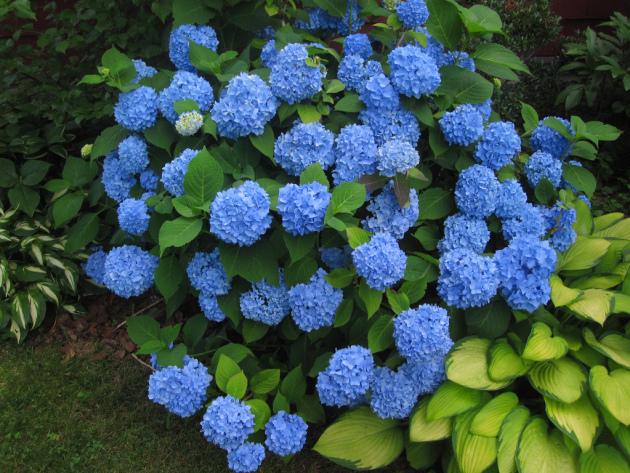
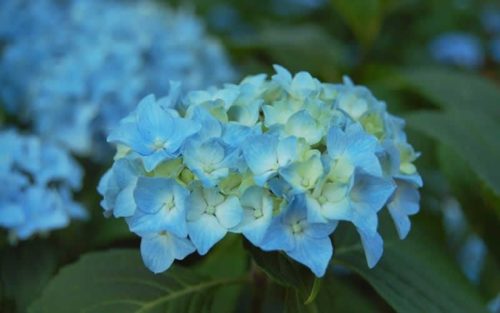
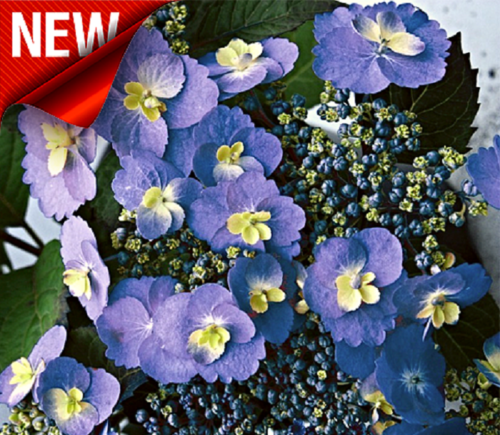


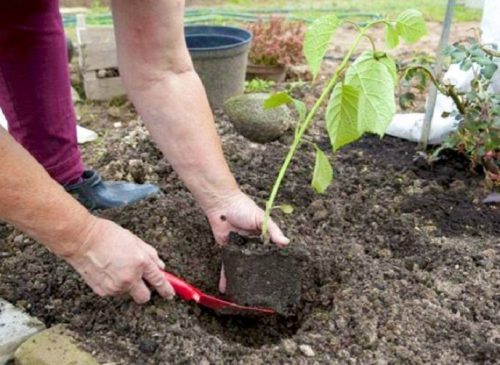
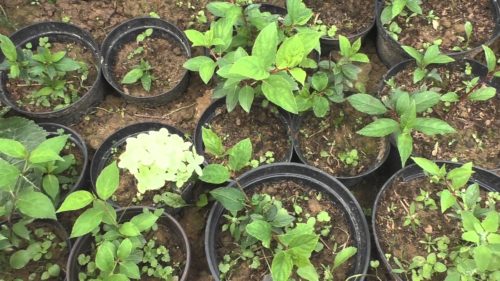
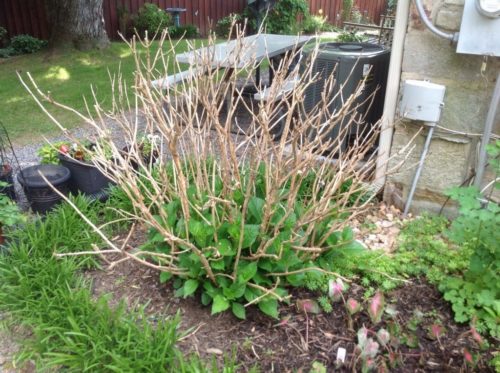
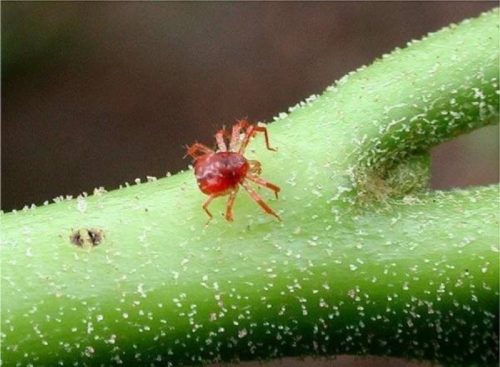

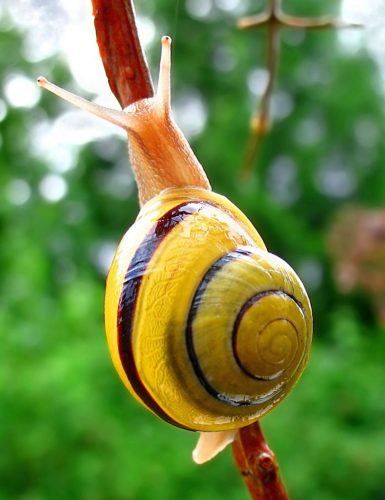
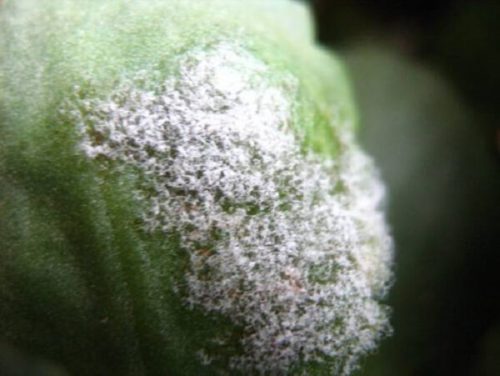

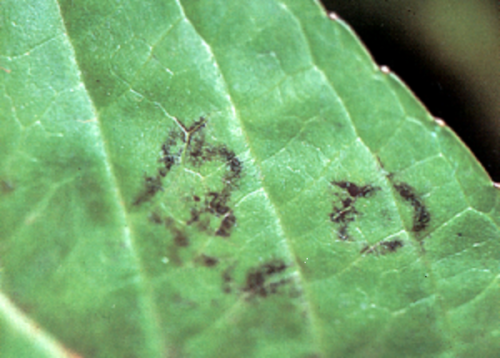
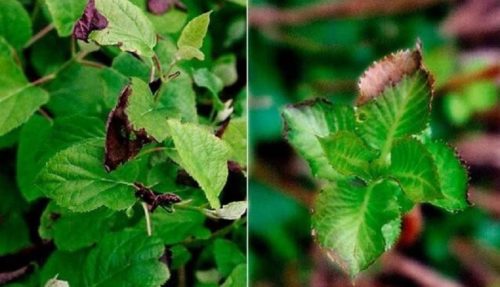
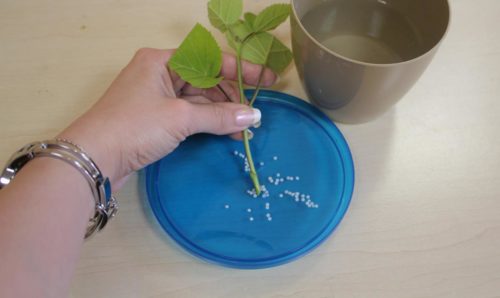
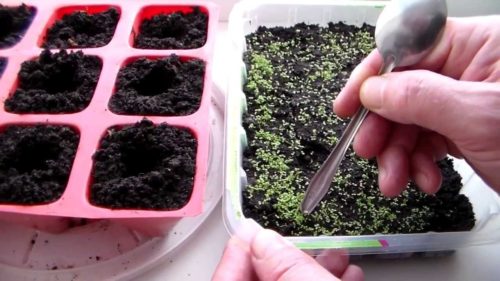
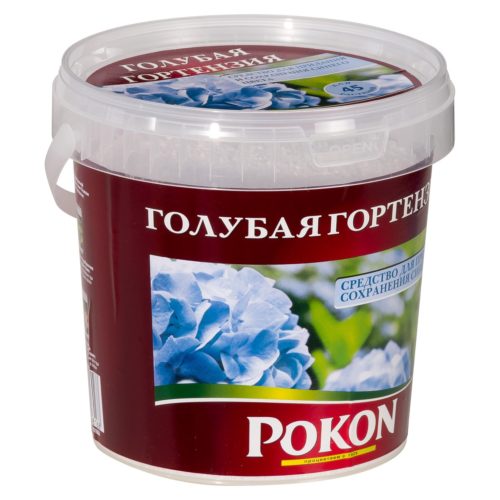
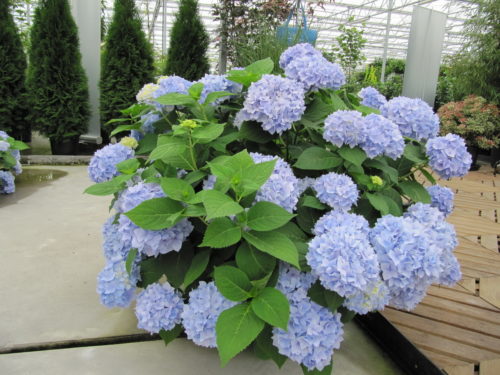

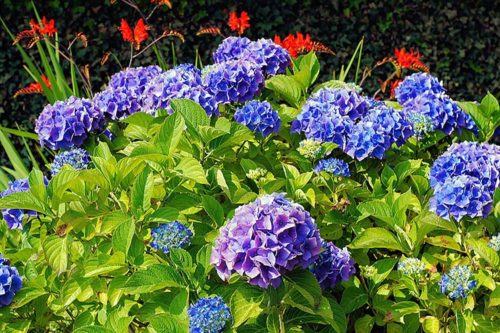












 Start a discussion ...
Start a discussion ...